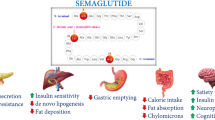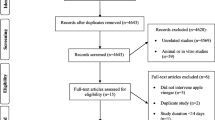Abstract
This study was to evaluate the anti-atherosclerotic effect of Korean red ginseng (KRG) in apolipoprotein E knockout (ApoE KO) mice. Female ApoE KO mice were divided into 2 groups and were treated via intragastric inoculation for 21 weeks. The body weight increased gradually in both the KRG extract inoculation group and the control group inoculated with saline. Plaque lesion areas in the aortic sinus were reduced largely in the KRG inoculation group than in the control group. Triglyceride and inflammatory cytokines such as monocyte chemoattractant protein-1 (MCP-1) and tumor necrosis factor-alpha (TNF-α) were significantly reduced in the KRG inoculation group. Additionally, the KRG inoculation group showed significantly lower cardiovascular inflammation by 18F-fluoro-2-deoxy-d-glucose positron emission tomography/computed tomography compared to that in the control group. Taken together, KRG alleviates atherosclerotic lesions through MCP-1 and TNF-α suppression. These results suggest that KRG could be a valuable therapeutic strategy for the treatment of atherosclerosis.
Similar content being viewed by others
References
Dahlöf B. Cardiovascular disease risk factors: Epidemiology and risk assessment. Am. J. Cardiol. 105 (Suppl. 1): 3A–9A (2010)
Hansson GK. Inflammation, atherosclerosis, and coronary artery disease. New Engl. J. Med. 352: 1685–1695 (2005)
Badimon L, Vilahur G. LDL-cholesterol versus HDL-cholesterol in the atherosclerotic plaque: Inflammatory resolution versus thrombotic chaos. Ann. NY Acad. Sci. 1254: 18–32 (2012)
Lu G, Zhou Q, Sun S, Leung KS, Zhang H, Zhao Z. Differentiation of Asian ginseng, American ginseng and Notoginseng by Fourier transform infrared spectroscopy combined with two-dimensional correlation infrared spectroscopy. J. Mol. Struct. 883–884: 91–98 (2008)
Nah SY. Gintonin: A novel ginseng-derived ligand that targets G protein-coupled lysophosphatidic acid receptors. Curr. Drug Targets 13: 1659–1664 (2012)
Attele AS, Wu JA, Yuan CS. Ginseng pharmacology: Multiple constituents and multiple actions. Biochem. Pharmacol. 58: 1685–1693 (1999)
McElhaney JE, Gravenstein S, Cole SK, Davidson E, O’neill D, Petitjean S, Rumble B, Shan JJ. A placebo-controlled trial of a proprietary extract of North American ginseng (CVT-E002) to prevent acute respiratory illness in institutionalized older adults. J. Am. Geriatr. Soc. 52: 13–19 (2004)
Caso Marasco A, Vargas Ruiz R, Salas Villagomez A, Begona Infante C. Double-blind study of a multivitamin complex supplemented with ginseng extract. Drugs Exp. Clin. Res. 22: 323–329 (1996)
Barton DL, Soori GS, Bauer BA, Sloan JA, Johnson PA, Figueras C, Duane S, Mattar B, Liu H, Atherton PJ, Christensen B, Loprinzi CL. Pilot study of Panax quinquefolius (American ginseng) to improve cancer-related fatigue: A randomized, double-blind, dosefinding evaluation: NCCTG trial N03CA. Support. Care Cancer 18: 179–187 (2010)
Suh SO, Kroh M, Kim NR, Joh YG, Cho MY. Effects of red ginseng upon postoperative immunity and survival in patients with stage III gastric cancer. Am. J. Chin. Med. 30: 483–494 (2002)
Yun TK, Lee YS, Lee YH, Kim SI, Yun HY. Anticarcinogenic effect of Panax ginseng C.A. Meyer and identification of active compounds. J. Korean Med. Sci. 16 (Suppl.): S6–S18 (2001)
Yun TK. Panax ginseng-a non-organ-specific cancer preventive? Lancet Oncol. 2: 49–55 (2001)
Sung H, Jung YS, Cho YK. Beneficial effects of a combination of Korean red ginseng and highly active antiretroviral therapy in human immunodeficiency virus type 1-infected patients. Clin. Vaccine Immunol. 16: 1127–1131 (2009)
Xu ML, Kim HJ, Choi YR, Kim HJ. Intake of Korean red ginseng extract and saponin enhances the protection conferred by vaccination with inactivated influenza a virus. J. Ginseng Res. 36: 396–402 (2012)
Liu H, Shi D, Wang W, Zhang C, Fu M, Ge J. Panax quinquefolium saponins inhibited immune maturation of human monocyte-derived dendritic cells via blocking nuclear factor-κB pathway. J. Ethnopharmacol. 141: 982–988 (2012)
Yuan Z, Liao Y, Tian G, Li H, Jia Y, Zhang H, Tan Z, Li X, Deng W, Liu K, Zhang Y. Panax notoginseng saponins inhibit Zymosan A induced atherosclerosis by suppressing integrin expression, FAK activation, and NF-κB translocation. J. Ethnopharmacol. 138: 150–155 (2011)
Dou L, Lu Y, Shen T, Huang X, Man Y, Wang S, Li J. Panax notogingseng saponins suppress RAGE/MAPK signaling and NFkappaB activation in apolipoprotein-E-deficient atherosclerosisprone mice. Cell Physiol. Biochem. 29: 875–882 (2012)
Kim D, Yu MK, Lee TS, Park JJ, Jeong YY, Jon S. Amphiphilic polymer-coated hybrid nanoparticles as CT/MRI dual contrast agents. Nanotechnology 22: 15–22 (2011)
Stolzmann P, Subramanian S, Abdelbaky A, Maurovich-Horvat P, Scheffel H, Tawakol A, Hoffmann U. Complementary value of cardiac FDG PET and CT for the characterization of atherosclerotic disease. Radiographics 31: 1255–1269 (2011)
Rudd JH, Myers KS, Bansilal S, Machac J, Pinto CA, Tong C, Rafique A, Hargeaves R, Farkouh M, Fuster V, Fayad ZA. Atherosclerosis inflammation imaging with 18F-FDG PET: Carotid, iliac, and femoral uptake reproducibility, quantification methods, and recommendations. J. Nucl. Med. 49: 871–878 (2008)
Buettner C, Rudd JH, Fayad ZA. Determinants of FDG uptake in atherosclerosis. JACC Cardiovasc. Imaging 4: 1302–1304 (2011)
Bucerius J, Duivenvoorden R, Mani V, Moncrieff C, Rudd JH, Calcagno C, Machac J, Fuster V, Farkouh ME, Fayad ZA. Prevalence and risk factors of carotid vessel wall inflammation in coronary artery disease patients: FDG-PET and CT imaging study. JACC Cardiovasc. Imaging 4: 1195–1205 (2011)
Zhao QM, Zhao X, Feng TT, Zhang MD, Zhuang XC, Zhao XC, Li LQ, Li DP, Liu Y. Detection of vulnerable atherosclerotic plaque and prediction of thrombosis events in a rabbit model using 18FFDG-PET/CT. PLoS ONE 8: e61140 (2013)
Marzola MC, Saboury B, Chondrogiannis S, Rampin L, Grassetto G, Ferretti A, Alavi A, Rubello D. Role of FDG PET/CT in investigating the mechanisms underlying atherosclerotic plaque formation and evolution. Rev. Esp. Med. Nucl. Imagen Mol. 32: 246–252 (2013)
Binder CJ, Chang MK, Shaw PX, Miller YI, Hartvigsen K, Dewan A, Witztum JL. Innate and acquired immunity in atherogenesis. Nat. Med. 8: 1218–1226 (2002)
Sprague AH, Khalil RA. Inflammatory cytokines in vascular dysfunction and vascular disease. Biochem. Pharmacol. 78: 539–552 (2009)
Xia M, Sui Z. Recent developments in CCR2 antagonists. Expert Opin. Ther. Pat. 19: 295–303 (2009)
Wan JB, Lee SM, Wang JD, Wang N, He CW, Wang YT, Kang JX. Panax notoginseng reduces atherosclerotic lesions in ApoEdeficient mice and inhibits TNF-alpha-induced endothelial adhesion molecule expression and monocyte adhesion. J. Agr. Food Chem. 57: 6692–6697 (2009)
Zhang YG, Zhang HG, Zhang GY, Fan JS, Li XH, Liu YH, Li SH, Lian XM, Tang Z. Panax notoginseng saponins attenuate atherosclerosis in rats by regulating the blood lipid profile and an anti-inflammatory action. Clin. Exp. Pharmacol. P. 35: 1238–1244 (2008)
Li J, Xie ZZ, Tang YB, Zhou JG, Guan YY. Ginsenoside-Rd, a purified component from panax notoginseng saponins, prevents atherosclerosis in apoE knockout mice. Eur. J. Pharmacol. 652: 104–110 (2011)
Author information
Authors and Affiliations
Corresponding author
Rights and permissions
About this article
Cite this article
Jeong, ES., Seo, JH., Yoo, R.J. et al. Korean red ginseng extract alleviates atherosclerotic lesions in apolipoprotein E knockout mice. Food Sci Biotechnol 23, 1267–1272 (2014). https://doi.org/10.1007/s10068-014-0174-5
Received:
Revised:
Accepted:
Published:
Issue Date:
DOI: https://doi.org/10.1007/s10068-014-0174-5




